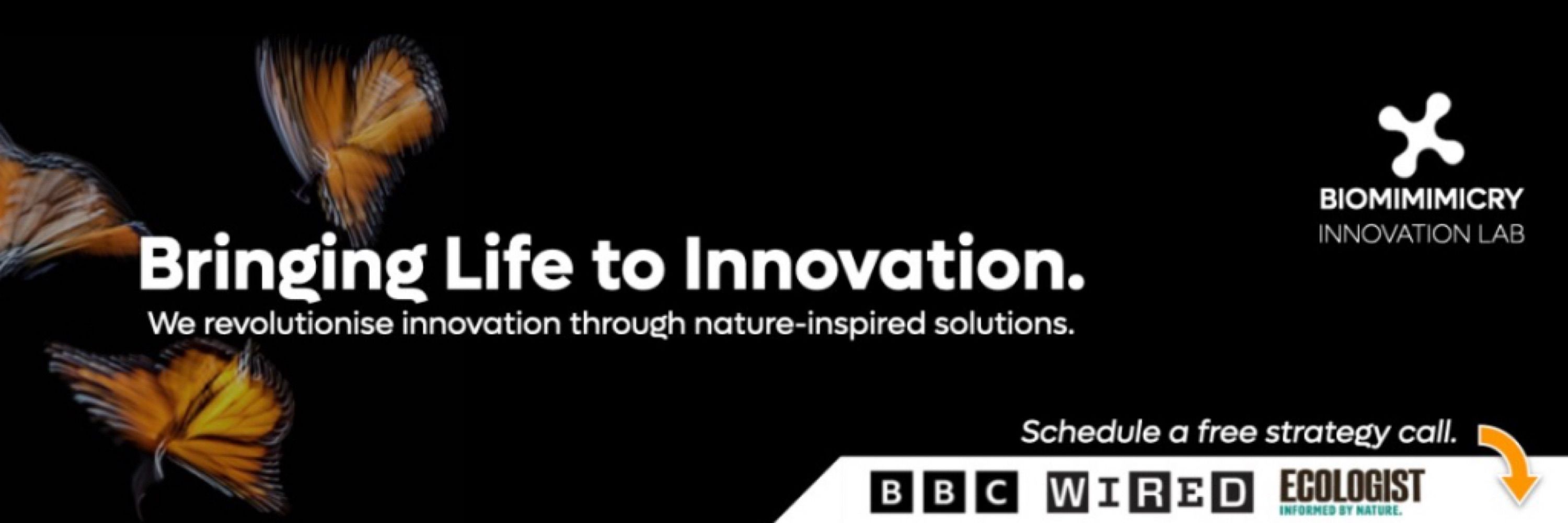
Come say hello - https://hihello.me/hi/richardjamesmaccowan-ZRKBMg
If you're at either summit, let's talk about what works.
🦋
#cosmetics #packaging #biomimetics #AI #networks
If you're at either summit, let's talk about what works.
🦋
#cosmetics #packaging #biomimetics #AI #networks
It's about selection-shaped functions solving similar problems under similar constraints.
Then proving they deliver measurable advantage in your application.
It's about selection-shaped functions solving similar problems under similar constraints.
Then proving they deliver measurable advantage in your application.
I've compiled the peer-reviewed answers with protocols your teams can use.
I've compiled the peer-reviewed answers with protocols your teams can use.
Does the biological principle map to your engineering context?
Can you measure the performance differential?
Will it survive your manufacturing constraints?
Does the biological principle map to your engineering context?
Can you measure the performance differential?
Will it survive your manufacturing constraints?
Not mimicking eyes. Understanding how selection pressure shaped robust sensory processing under constraint.
Not mimicking eyes. Understanding how selection pressure shaped robust sensory processing under constraint.
Not copying beetle patterns. Mapping the mechanisms producing colour without pigment.
Not copying beetle patterns. Mapping the mechanisms producing colour without pigment.
Meanwhile, insect vision has been handling variable inputs for millions of generations.
Meanwhile, insect vision has been handling variable inputs for millions of generations.
This conflicts with the time needed to validate biological mechanisms properly.
Most teams default to traditional chemistry.
This conflicts with the time needed to validate biological mechanisms properly.
Most teams default to traditional chemistry.
Different sectors. Same challenge.
Different sectors. Same challenge.
It's in the leaf-environment interaction; solutions evolved over millennia to solve problems we're just beginning to measure correctly.
🦋
It's in the leaf-environment interaction; solutions evolved over millennia to solve problems we're just beginning to measure correctly.
🦋
Couple surface chemistry, microtopography, and controlled airflow in one workflow.
Expect tighter predictions, clearer mechanisms, stronger bioinspired design choices.
Couple surface chemistry, microtopography, and controlled airflow in one workflow.
Expect tighter predictions, clearer mechanisms, stronger bioinspired design choices.
If your surface coating models came from still-air data, they'll fail when deployed.
If your self-cleaning designs ignore airflow, they won't self-clean in REAL-WORLD conditions.
If your surface coating models came from still-air data, they'll fail when deployed.
If your self-cleaning designs ignore airflow, they won't self-clean in REAL-WORLD conditions.
This is a pattern in scientific inquiry: isolating variables at the expense of understanding HOLISTIC SYSTEMS.
Nature rarely operates through single-factor mechanisms.
This is a pattern in scientific inquiry: isolating variables at the expense of understanding HOLISTIC SYSTEMS.
Nature rarely operates through single-factor mechanisms.
Hydrophobic AND hydrophilic zones create microenvironments where water behaves unpredictably.
Environmental factors don't just influence—they transform the system.
Hydrophobic AND hydrophilic zones create microenvironments where water behaves unpredictably.
Environmental factors don't just influence—they transform the system.
The BOUNDARY LAYER redistributes droplets across mixed wetting surfaces, shifting adhesion and roll-off thresholds we thought were stable.
Small airflow variations create dramatically different outcomes.
The BOUNDARY LAYER redistributes droplets across mixed wetting surfaces, shifting adhesion and roll-off thresholds we thought were stable.
Small airflow variations create dramatically different outcomes.
The hydrophobic-hydrophilic matrix triggers REGIME CHANGES in coalescence, pinning, and self-cleaning that static trials never revealed.
The hydrophobic-hydrophilic matrix triggers REGIME CHANGES in coalescence, pinning, and self-cleaning that static trials never revealed.
We've been studying these leaves in still air for decades.
Bench-top results looked clean. Repeatable. Publishable.
But they don't match what happens in the field.
We've been studying these leaves in still air for decades.
Bench-top results looked clean. Repeatable. Publishable.
But they don't match what happens in the field.
Turns out, this film modulates droplet behaviour as much as the microstructure does.
Small changes in shear produce different pinning, runoff, and particulate transport patterns.
Turns out, this film modulates droplet behaviour as much as the microstructure does.
Small changes in shear produce different pinning, runoff, and particulate transport patterns.
Further reading: https://news.njit.edu/ywcc-student-faculty-win-best-presentation-award-simulating-ant-swarms
Switch from fighting collisions to converting them into coordinated flow.
The thresholds are published. The simulations are validated. The applications are immediate.
Time to test them in your system.
Switch from fighting collisions to converting them into coordinated flow.
The thresholds are published. The simulations are validated. The applications are immediate.
Time to test them in your system.
Biological systems aren't "optimised."
Trade-offs and constraints shape them.
That's precisely why they work at scale - they evolved under the same messy conditions your systems face.
Biological systems aren't "optimised."
Trade-offs and constraints shape them.
That's precisely why they work at scale - they evolved under the same messy conditions your systems face.
You can test the yielding and spacing parameters in your existing planning stack within MINUTES.
Not metaphors. Mechanisms with clear values you can tune.
You can test the yielding and spacing parameters in your existing planning stack within MINUTES.
Not metaphors. Mechanisms with clear values you can tune.
FROM brittle central control that breaks under edge cases
TO resilient local rules that handle noise, density spikes, and hardware variation
FROM brittle central control that breaks under edge cases
TO resilient local rules that handle noise, density spikes, and hardware variation

